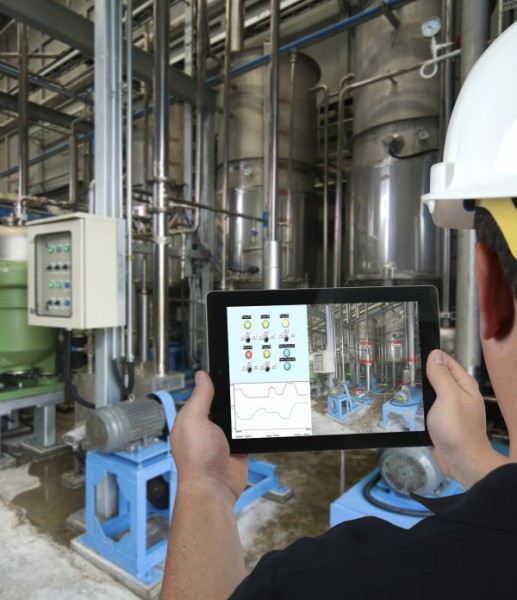For quick and secure access to production and process data, a PC-based supervisory control and data acquisition (SCADA) system is often the best solution. Whether upstream, midstream or downstream in the process, data can be collected by the SCADA system using a variety of built-in tools. Once collected from controllers and smart devices, the data is stored and can then be distributed to local and remote user via PCs, smartphones and tablets.
SCADA Data Acquisition Tools
Writing custom code to collect data from today’s process operations is no longer necessary. These tools are now built-in to SCADA software packages, such as AutomationDirect’s Point of View. Tools that collect, acquire, store, monitor and display process data are now just configuration clicks away.
SCADA systems provide support for many communication technologies, allowing simple and quick connection to a variety of data sources. If you need to connect to data using Open Database Connectivity (ODBC), populate an Excel spreadsheet or SQL database, or exchange data with an ERP, modern PC-based SCADA software has the built-in tool needed to simplify these tasks.
Getting to the Data
Once the data is collected, local or remote access can be configured a variety of ways including:
- Direct via the SCADA system
- Via applications such as historians and ERP systems installed on a corporate intranet
- Via a SCADA application installed in the cloud
Thin clients are popular for accessing, viewing and interacting with SCADA system data. One or more PCs or embedded platforms can have thin client software installed, and can access the SCADA system directly via Ethernet. This is a simple way to create a local HMI to access the central SCADA system.
Larger SCADA applications are often connected to historians and ERP systems running on servers installed on the corporate internet. These servers can not only store data locally, but can also upload it to the cloud.
Web-based thin clients are often used to access this cloud data, and these installations usually require an Internet Information Services (IIS) server, available in all but the most basic versions of Microsoft Windows. However, any browser can be used to access the information.
With SCADA applications running in the cloud, remote access from anywhere via the Internet and a web browser becomes available. These mobile thin client connections are made via PCs, smartphones or tablets.
Keeping it Secure
Any SCADA system with remote access should be properly secured by following these and other steps:
- Limit connectivity
- Use VPNs for corporate networks
- Add encryption
- Make most, if not all, access one-way, from the SCADA to the remote user
- Limit access to only what’s required by each user
- Restrict access to specific devices
- Provide rigorous authentication for each remote device
- Require users to change passwords frequently
- For cloud implementations, vet the provider’s security procedures
Limiting connectivity reduces the number of security holes that may show up. When connecting the plant’s control network, less is better. And whatever is connected should use VPNs and encryption when feasible, as with corporate networks.
If control or set point changes are not needed from remote locations or certain uses, allow only one-way access for monitoring. Only allow access to the particular functions and devices required by each user. The users should also be challenged with rigorous authentication and passwords. For cloud implementations, take advantage of the cloud service provider’s cybersecurity program.
Working the Connections
Once users are remotely connected to the SCADA system, they can start reaping benefits such as quickly making production decisions to improve operations. Remote access can also help reduce production stoppages and improve safety by quickly informing the right personnel when issues occur.

Remote access enables monitoring of changes in pressure, flow, temperature and other process variables. The ability to monitor and quickly respond to adverse changes in the process can greatly reduce downtime. Process efficiency can be increased and costs reduced by using the SCADA system and its real-time analysis of the drilling, pumping or pipeline processes.
For more information, please see the article Modern SCADA Systems Improve Equipment Operations & Maintenance in the March 2016 issue of IEN magazine, authored by Jeff Payne, a Product Manager at AutomationDirect.
To learn more about programmable control, click here.


